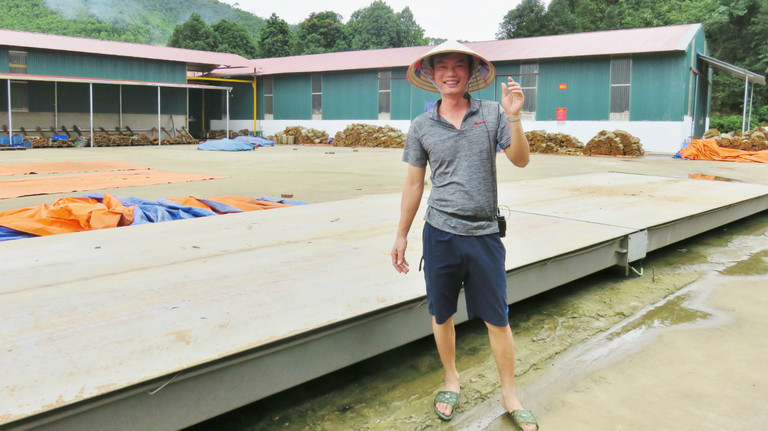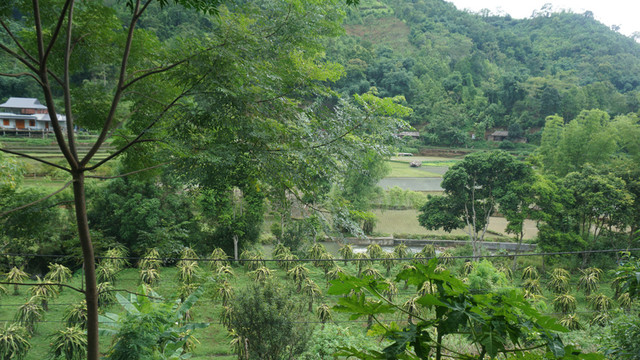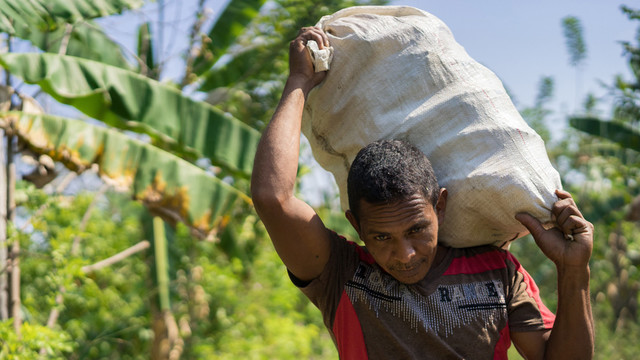Vietnamese forest and farm producers work towards more resilient livelihoods and landscapes
As the UN launches the Decade of Family Farming, Duncan Macqueen considers the role of the Forest and Farm Facility programme in improving incomes, employment and sustainable agricultural practices for Vietnamese farmers.


Cinnamon dries inside a special facility run by a cooperative group of cinnamon tree growers (Photo: Duncan Macqueen/IIED)
Worldwide up to 1.5 billion people work on more than 500 million family-run farms. These farms not only produce 80% of the world’s food, they also play a vital role in improving food security, reducing poverty, and achieving the Sustainable Development Goals (SDGs).
But many family farms are isolated. This reduces their access to markets and support services, and hampers their ability to coordinate potentially landscape-scale efforts to integrate forest and trees into sustainable farming while improving social and cultural services to vulnerable groups.
To help family farms to achieve their potential, the UN Food and Agriculture Organization (FAO) has launched the Decade of Family Farming, a global initiative to encourage governments, international donors and others to adopt pro-family farm policies.
One of the main tenets of the FAO’s 10-year plan is to strengthen the organisations of family farmers to improve access to markets and increase policy influence, as well as giving them the collective scale to coordinate landscape-scale restoration efforts and improvements to the provision of social and cultural services.
Investing in organisation is the foundational approach of the Forest and Farm Facility (FFF), which is jointly managed by the FAO, IIED, IUCN and Agricord, and channels funding directly to forest and farm producer organisations to improve livelihoods and ensure climate-resilient landscapes.
A good example of the Forest and Farm Facility’s work to promote a more equitable and sustainable business model comes from Vietnam’s northern Yen Bai Province, where FFF’s partner organisation, the Viet Nam Farmers Union (VNFU), has been supporting farmers growing cinnamon, star anise, plants for herbal medicine and mulberry for silkworm farms.
Stronger together
The VNFU project management unit first visited Yen Bai in 2015, when there were a number of unorganised cinnamon tree growers supplying local traders and a local cinnamon processing company. Prices were low and unstable – and the growers had little knowledge of the market or of processing options. None were operating or registered as a business.
Following discussions facilitated by the FFF, the growers realised that forming a group could help them share market and technical information, aggregate their supply, and hopefully negotiate better prices for their product. This crucial, early trust-building work by the FFF led to the formation of four collective groups, locally called 'To Hop Tac' (THT).
Members of the groups were then selected to participate in an FFF-funded training programme to improve their knowledge of how to manage a group business.
The THT groups recognised that greater organisation could enhance their strength in numbers – and improve their negotiating position with buyers. They decided to establish an inter-collective group that worked out a business plan, looked for potential buyers, introduced their cinnamon products in agriculture fairs, and actively grew their market.
The group also started learning and applying organic cinnamon growing techniques to improve the quality of cinnamon and began planting herbal trees under the cinnamon to diversify production options.
During that process, FFF also helped facilitate policy roundtable discussions at commune, district, province and national levels. At each roundtable, collective group members met with local government agencies and private sector actors. At the district level, a buyer was identified for the cinnamon; one who was also interested in enhancing the quality and range of products produced by the group.
Forming a cooperative to attract investment
By the end of 2016, most members of the inter-collective group wanted to establish a cooperative to expand their production and business with legal status. After reaching an agreement with local government authorities to lease land for a processing plant, 23 out of 39 members said they would be willing to put their own money into the project.
Bank loans were available, and the buyer was also willing to invest – but only if the group registered as a cooperative.

As a result, the Viet Nam Cinnamon and Star Anise Cooperative was launched on 17 April 2017, with a strategy to produce organic cinnamon to supply the global market. The construction of their US$3.5 million processing factory was completed in 2019.
By the time I visited the cooperative in May 2019, the formerly disorganised group was now a formally registered cooperative marketing various washed and dried grades of organically certified cinnamon to a range of national buyers.
In addition to the 23 founding members, more than 500 associate members are growing and supplying cinnamon to the processing plant. Incomes have risen accordingly, and the factory alone creates permanent jobs for more than 60 people, most of which are women.
Since then, two further collective groups have been established in Dao Thinh commune – one focused on growing and marketing four different herbal plant remedies, the other focused on establishing mulberry for a silkworm collective group.
IIED’s role as the knowledge part in FFF has involved collaborative Phase II work to survey each collective group’s knowledge and support needs, helping to identify ongoing interventions that could help these collectives to achieve their ambitions. These include business management training, technical advice on climate resilient inter-cropping arrangements, support for market research and technology upgrading, and policy advocacy support to pursue fairer credit arrangements and social insurance for workers.
As one of an increasing number of FFF success stories, this example shows how we can create the enabling conditions for fair, collective-action businesses that diversify farm production, improve livelihoods and deliver climate-resilient landscapes.




